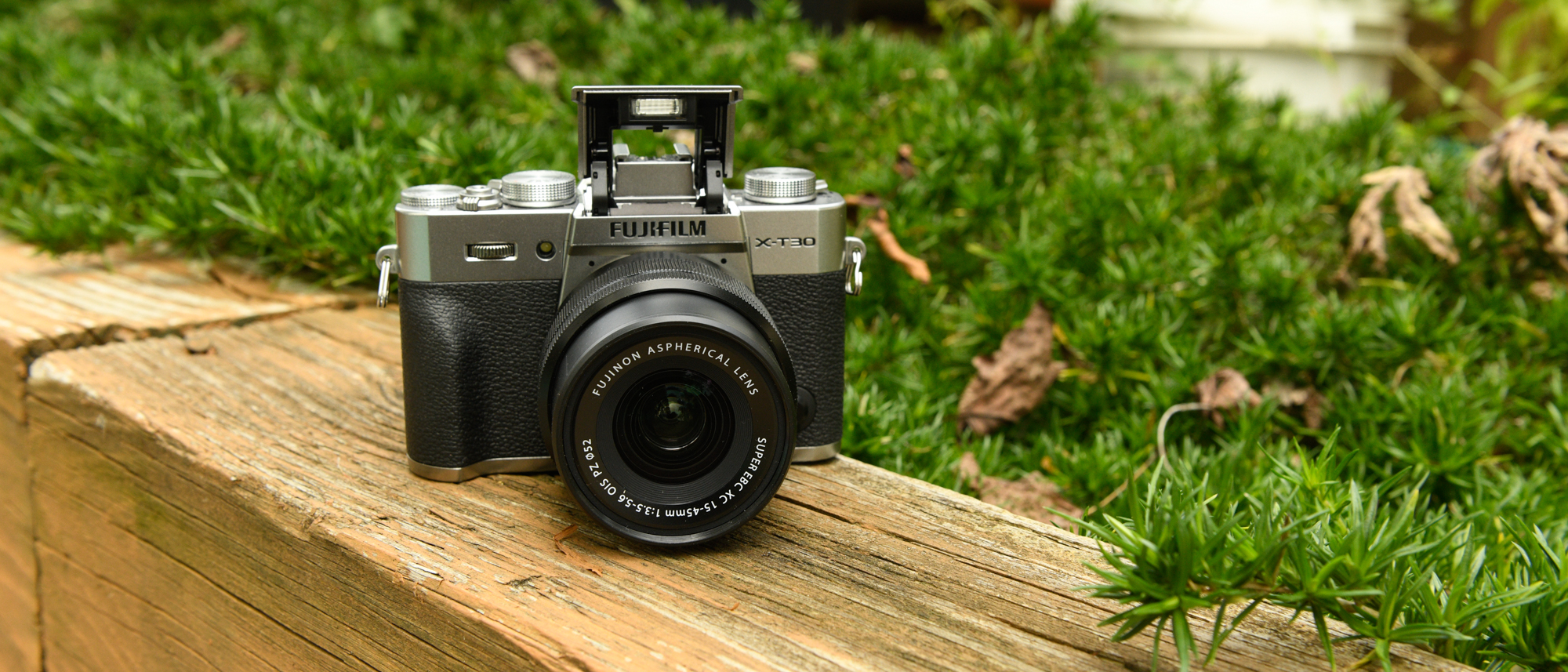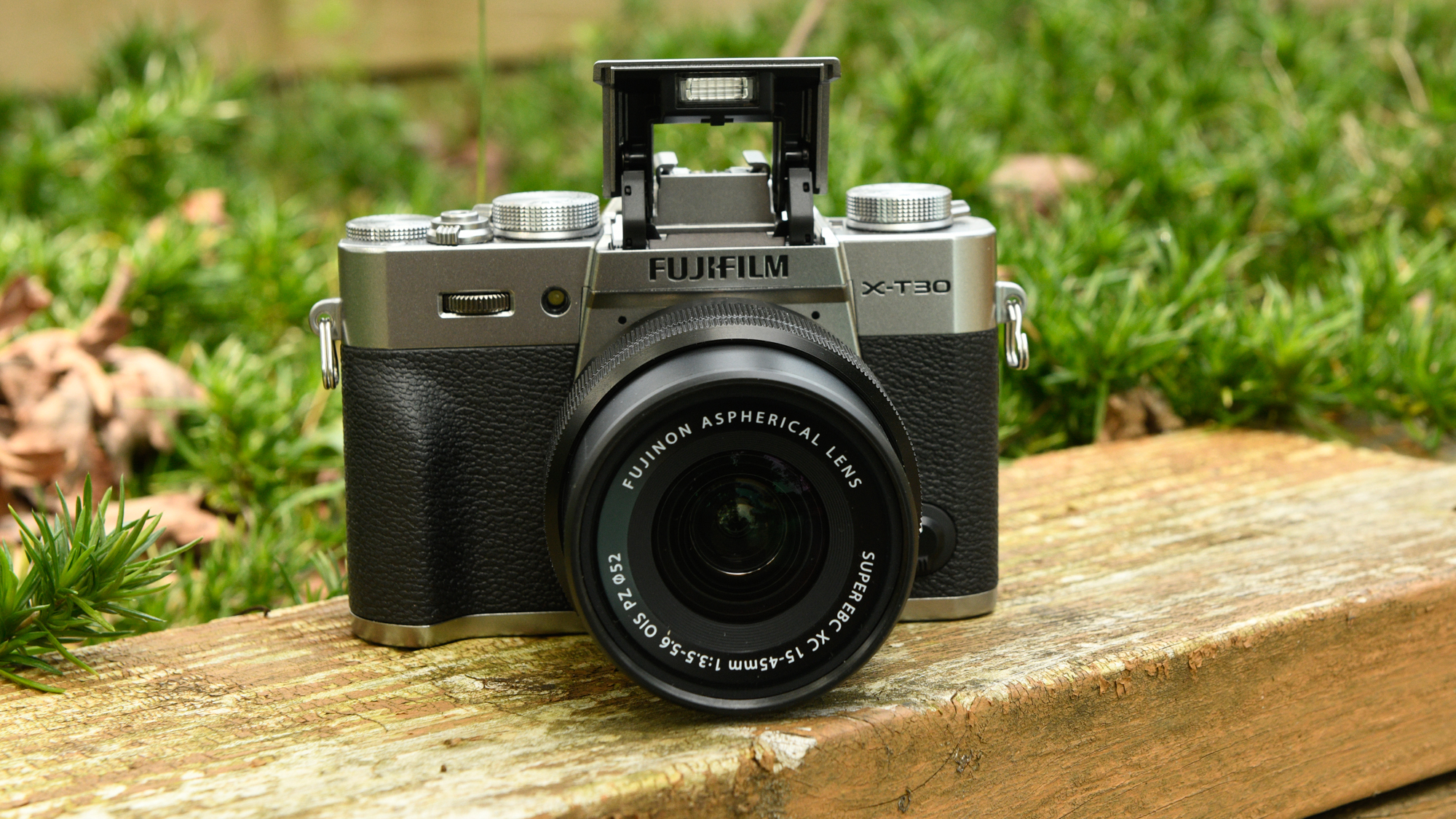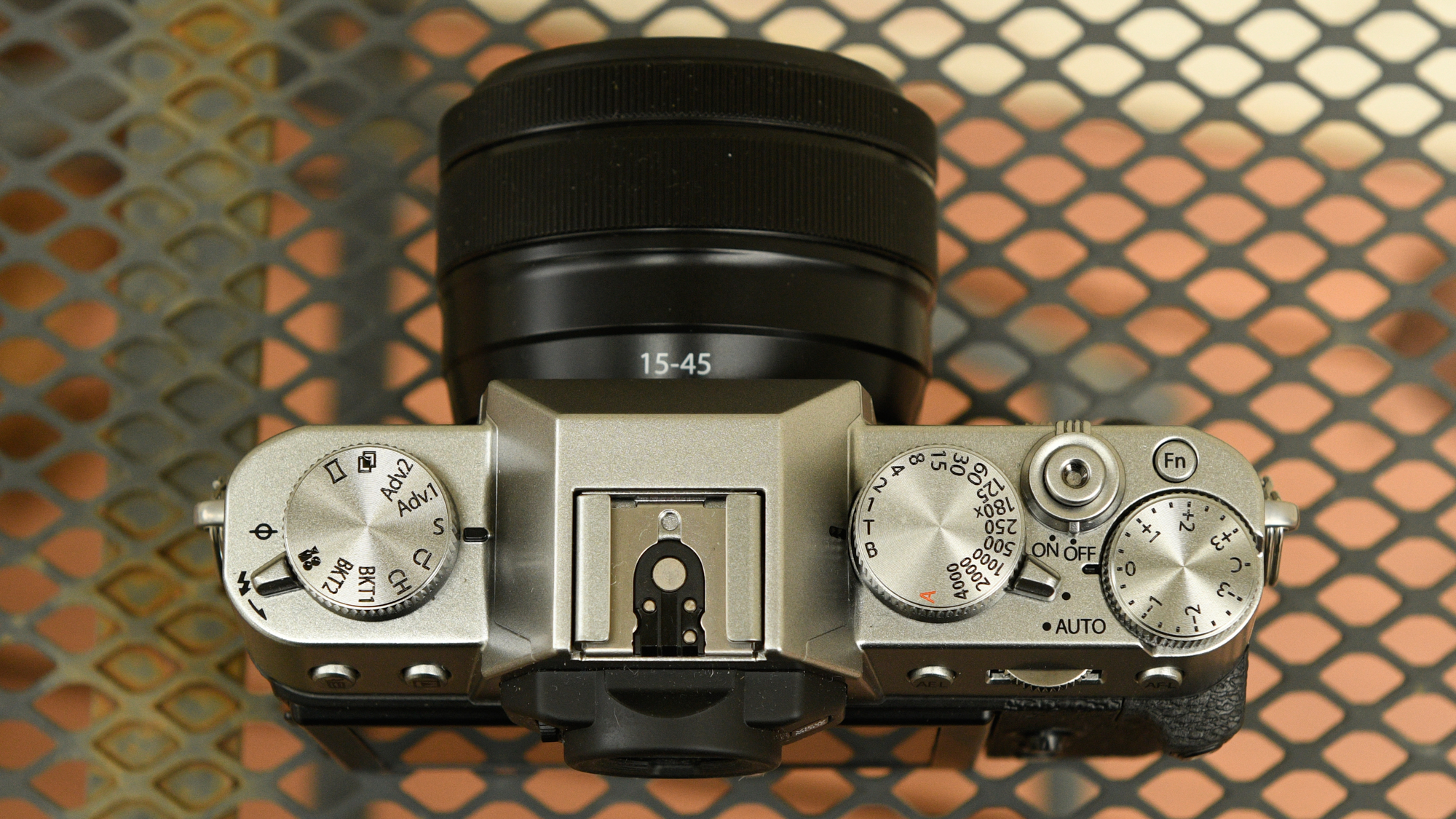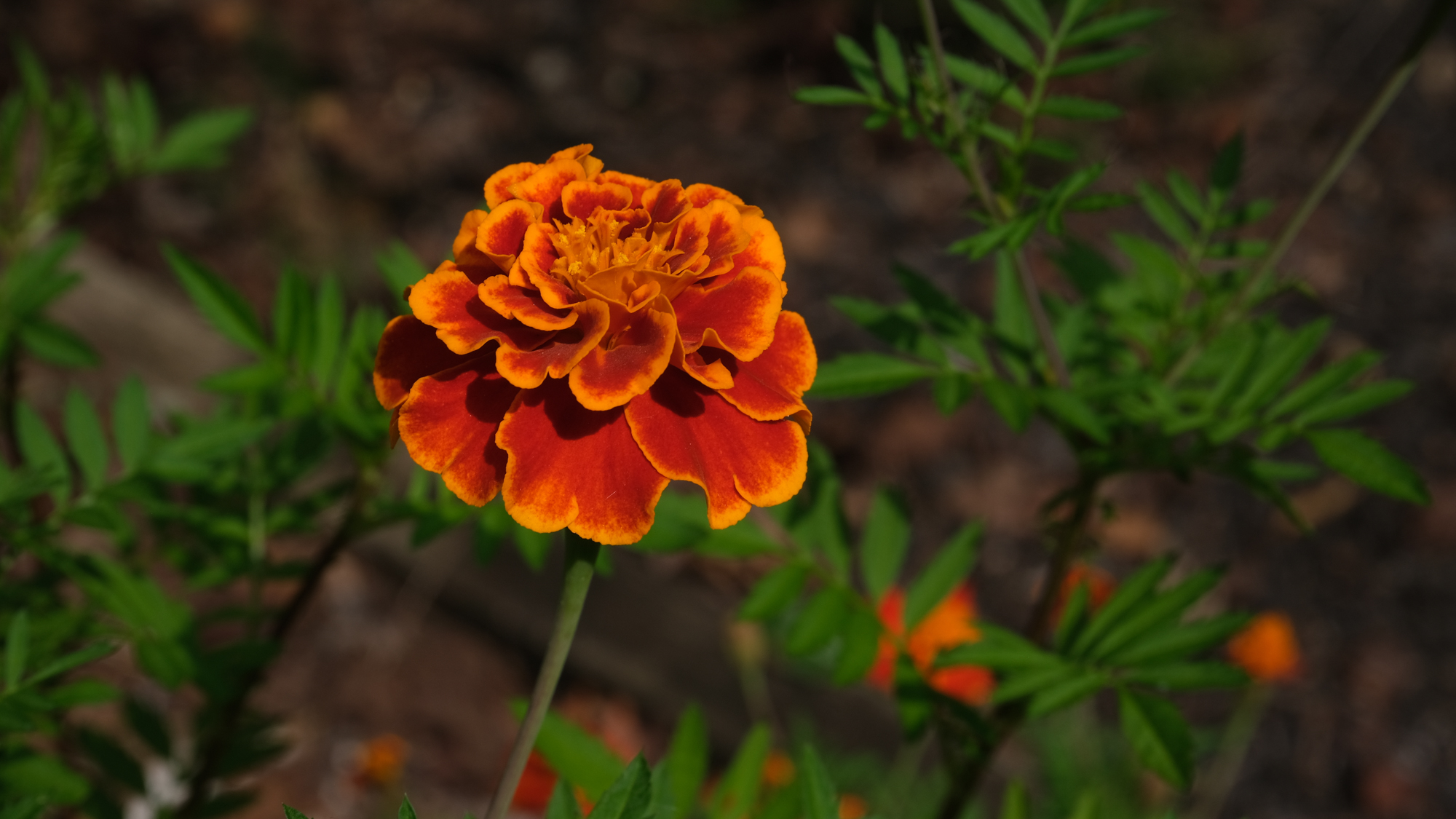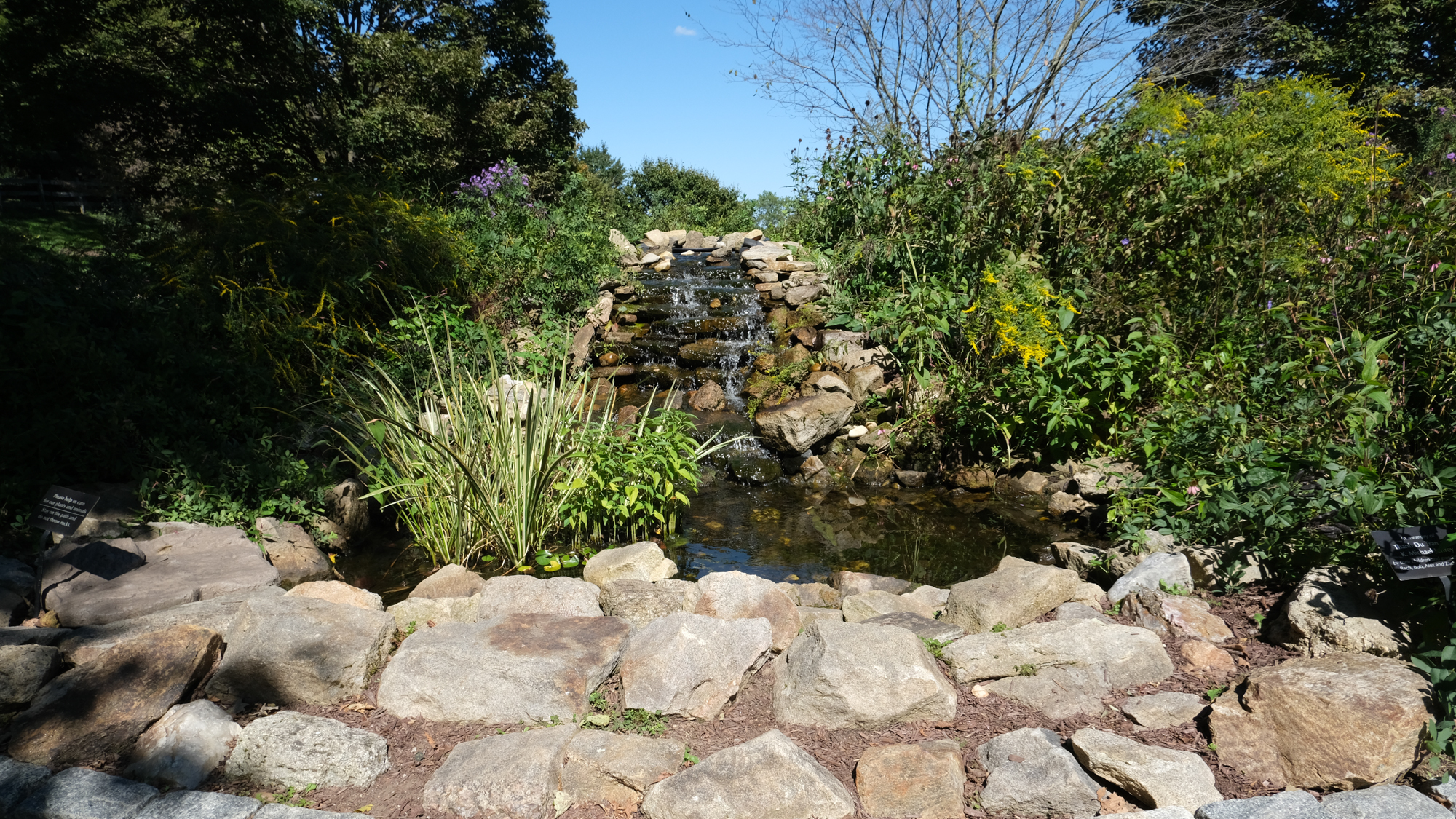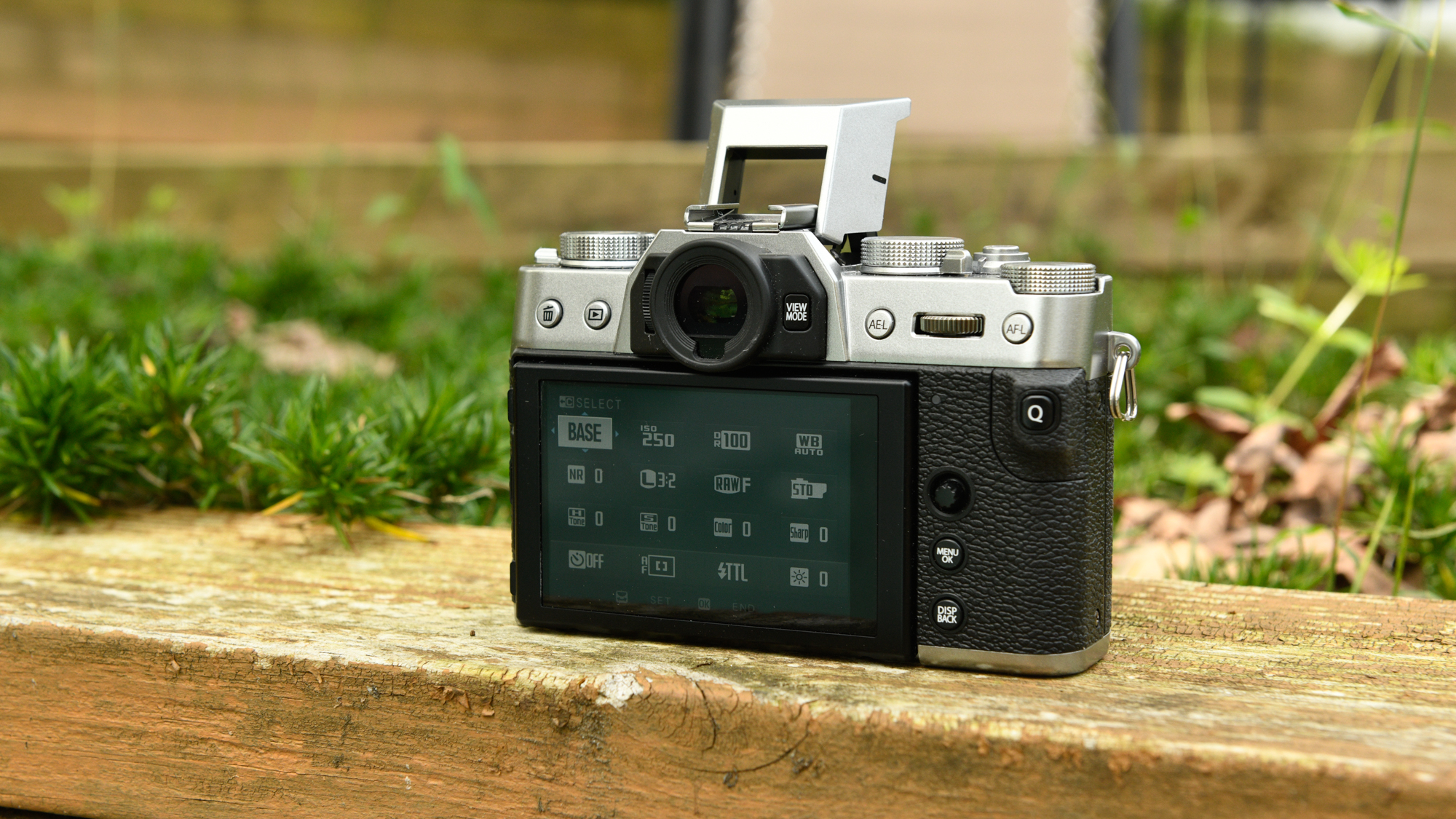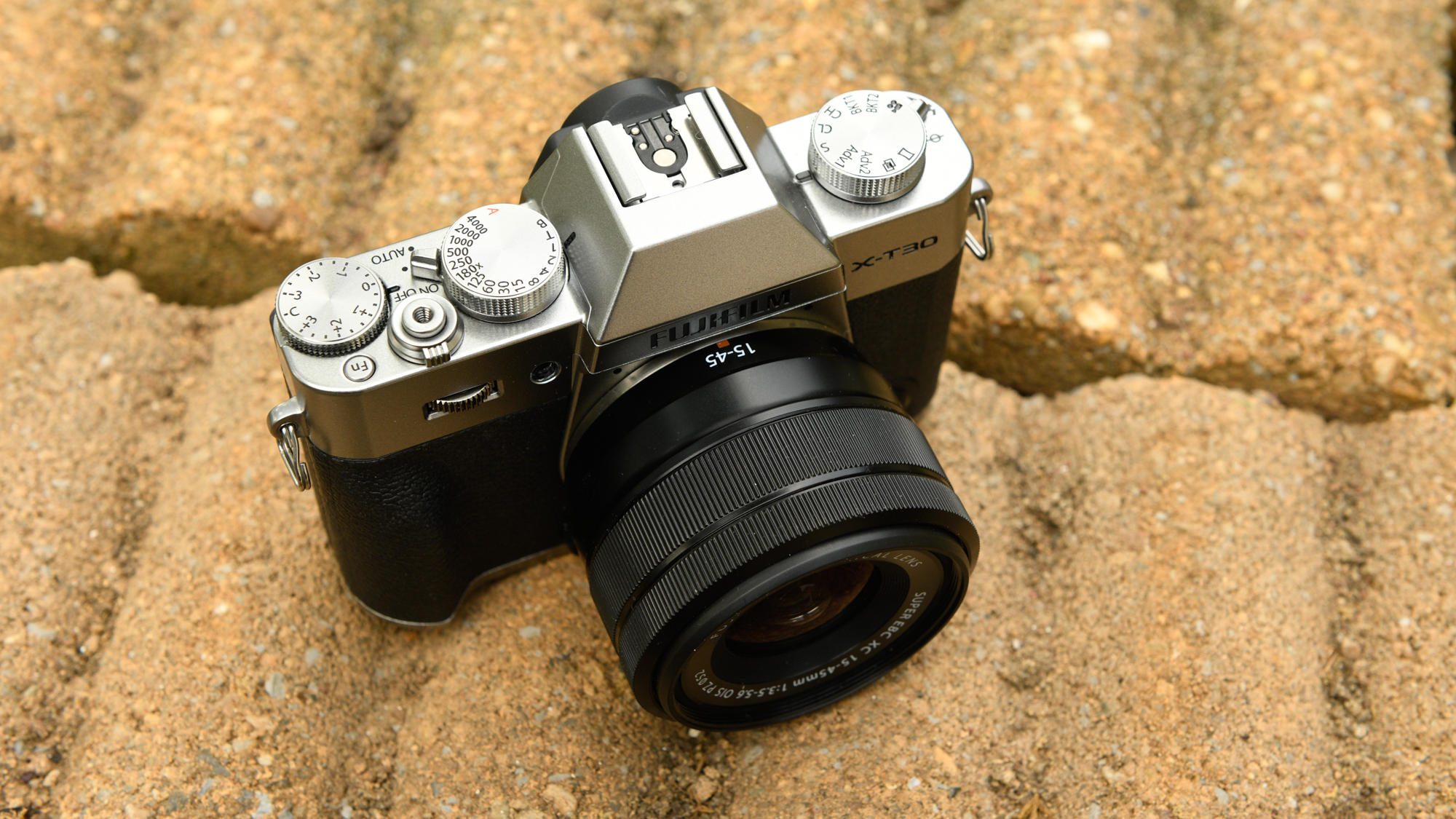Tom's Guide Verdict
The Fujifilm X-T30 is an excellent midrange mirrorless camera, but the Sony A6400 is better at video.
Pros
- +
Solid image quality
- +
Responsive touchscreen
- +
Excellent feature set
Cons
- -
10 minute 4K recording limit
- -
No in-body image stabilization
Why you can trust Tom's Guide
The Fujifilm X-T30 has been called a mini X-T3, referring to its higher end mirrorless camera sibling. Although the X-T30 is missing some key features like weather sealing, dual card slots and a fully-articulating LCD, much of the X-T3’s attributes have trickled down to the more affordable X-T30, which makes it one of the best mirrorless cameras under $1,000.
Image Sensor: 26.1MP APS-C
Storage Media: SD/SDHC/SDXC
ISO: 160-12800 (80-51200 extended)
Image Stabilization: via OIS lenses
Electronic Viewfinder: 0.39 inch; 2.36 million dots
Display: 3.0 inch touchscreen; 1.04 million dots
Max video resolution: DCI 4K (4096 x2160) at 30/24p; Full HD (1920 x 1080) at 120p
Shooting Speed: 30fps (w/electronic shutter); 8fps (w/ mechanical shutter)
Wireless/Bluetooth: Yes
Ports: USB Type-C, micro HDMI, 2.5mm audio jack
Battery life (CIPA): up to 380 shots
Size (body): 4.7 x 3.3 x 1.8 inches
Weight: 13.5 ounces w/battery and memory card
An abundance of features on this midrange camera meet the technical and creative needs for most photographers who prefer to have full control over their picture-taking. Like other Fujifilm X-series cameras, the love it or hate it (I love it) retro look, feel and operation of the X-T30 provides a unique photographic experience that will motivate you to think more seriously about making pictures. Read the rest of our Fujifilm X-T30 review to see what else we liked, as well as sample photos and video.
Fujifilm X-T30: Price and Availability
The Fujifilm X-T30 is currently available in several configurations: Body only ($899); with the 15-45mm lens ($999); an 18-55mm lens ($1,299); or a 35mm f/2 lens ($1,298). The camera is available in all black, black and silver or charcoal and silver.
Fujifilm X-T30: Design
The retro-styled Fujifilm X-T30 is a handsome camera with a solid build. Compact and lightweight, the X-T30 is very comfortable to hold and use. Although the grip is a bit shallow for larger hands, the dials are sized to be a good fit for any pair of hands.
While the electronic viewfinder (EVF) is a little small it’s generally bright, and given that some rivals in this price range don't have a built-in EVF at all (the Canon EOS My Mark II, for instance), I'm still glad it's here. The 3-inch tiltable touchscreen is responsive to touch. Touch focus and touch shutter both work well and you can swipe and pinch/zoom images in Playback mode. It’s a little less responsive when using touch to change settings in the Quick menu (the joystick and command dials are faster). You can’t navigate the main menus by touch, though.
The small, on-camera pop-up flash illuminates to a distance of about 20 feet and its TTL (through the lens) metering works very well. Although I shot these blooms close-up (probably less than a foot), the flash did not blow out the highlights on the petals.
The camera has a single SD card slot, and ports include USB-C, HDMI and a 2.5mm microphone jack (you’ll need an adapter to fit standard 3.5mm microphones.) The battery is charged in-camera.
Get instant access to breaking news, the hottest reviews, great deals and helpful tips.
Fujifilm X-T30: Controls
One of the first things you notice about the X-T30 is the top panel’s chunky dials. If you come from a 35mm film background, these controls will feel familiar. On the top left panel, the drive dial provides access to continuous shooting, bracketing, panorama, movie mode and more. Next to the dial, a small lever pops up the built-in flash. Or, if you prefer, you can use an external flash in the hot shoe.
Move to the top right panel to find the X-T30’s shutter speed and exposure compensation dials. The shutter button is perfectly placed and is threaded to accommodate a manual cable release for long exposures.
Front and rear command dials are within easy reach and can be used to adjust settings and scroll through menus. Both dials can be depressed for additional access to settings.
The Q button on the rear of the camera calls up a quick menu for setting changes. It’s a little too easy to accidentally launch the Q menu because it’s placed right next to the thumb rest. Not a huge deal, though; just something to be aware of.
The other control worth noting is the joystick on the rear of the camera, which makes it easy to change the focus point if you’d rather not use the LCD’s touch focus option. The joystick, like the front and rear command dials, can also be used to navigate menus.
Be sure to check out the X-T30’s extensive customization options. This camera can be customized in so many ways that it would take page upon page to list them all—a real bonus for those who want to have everything they need at their fingertips.
Fujifilm X-T30: Image quality
Excellent image quality is the norm for the X-T30. Colors are accurate and even when set to Standard (Provia) film simulation, photos are well-saturated for a natural look. For the most part, auto white balance worked well under changing lighting conditions. For example, the X-T30 did a good job capturing the vibrant colors of this marigold.
Auto white balance worked well. And, overall, the 15-45mm kits lens delivered relatively sharp images especially given its inexpensive ($299) price tag.
The X-T30 has a trio of dynamic range settings: 100% (default); $200% and 400%, which capture additional highlights. The default setting of 100% should be more than sufficient for most conditions. Shoot RAW and pull out the details in post-processing for the best results.
The X-T30’s native ISO range is 160-12,800 but expandable to a low of ISO 80 and a high of 51,200, so you have plenty of flexibility when you need it. Image noise was handled extremely well up to about ISO 3200. If you pair the X-T30 with an image stabilized lens like the kit 15-45mm, you’ll gain about three stops of compensation and may not need to push the ISO higher than 3200.
Check out sample images below to see how the camera performs at high ISO.
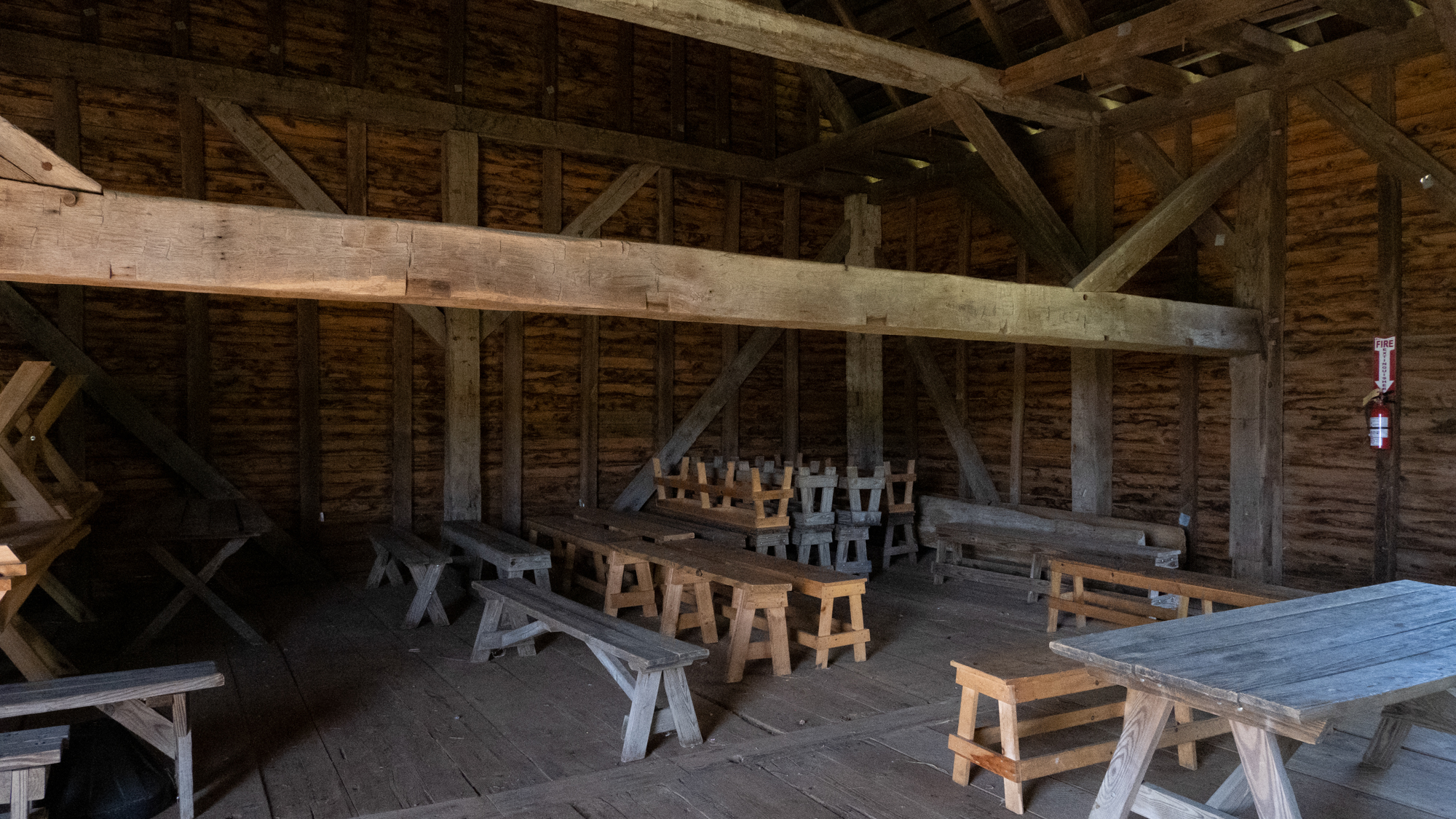
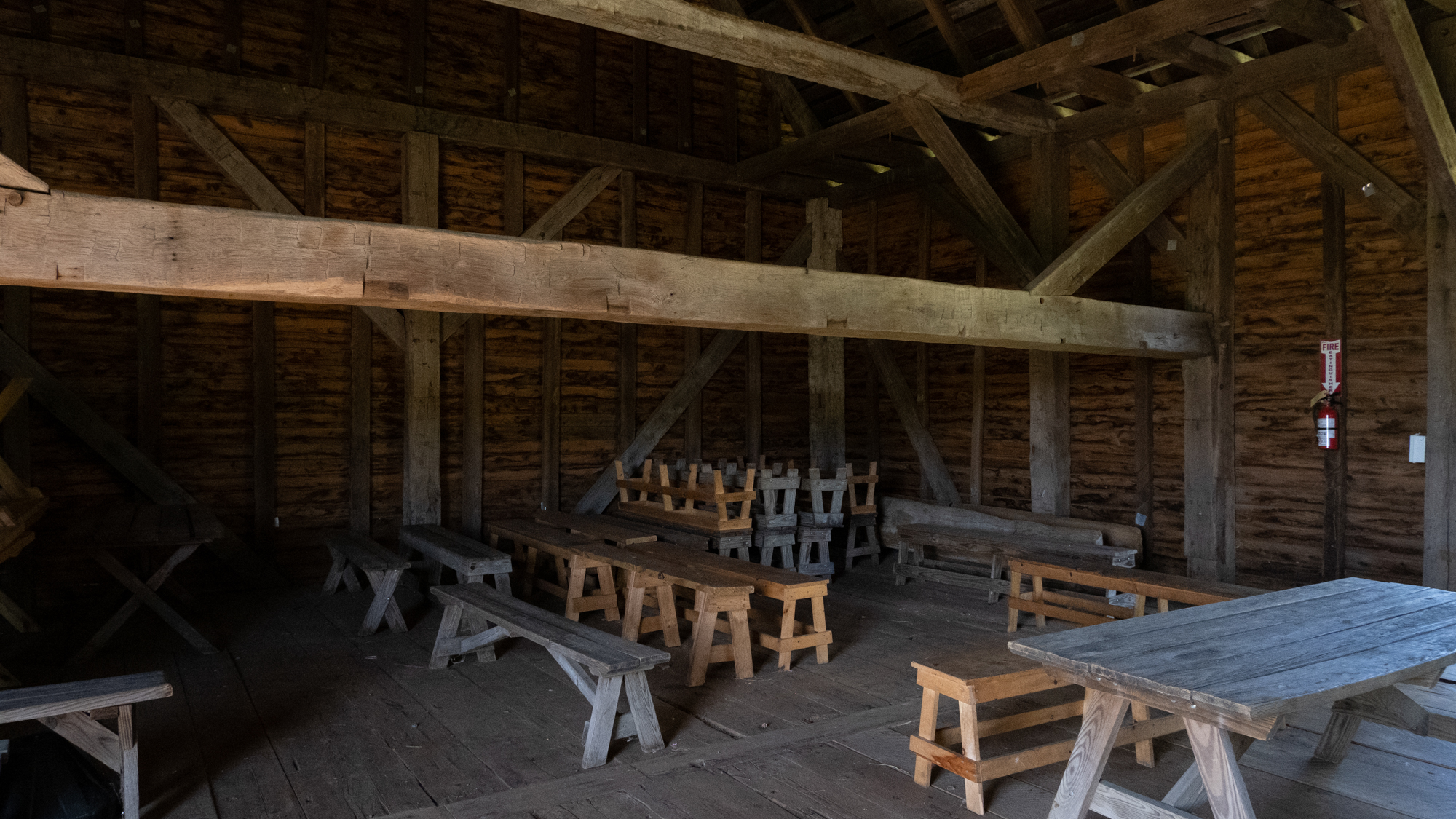
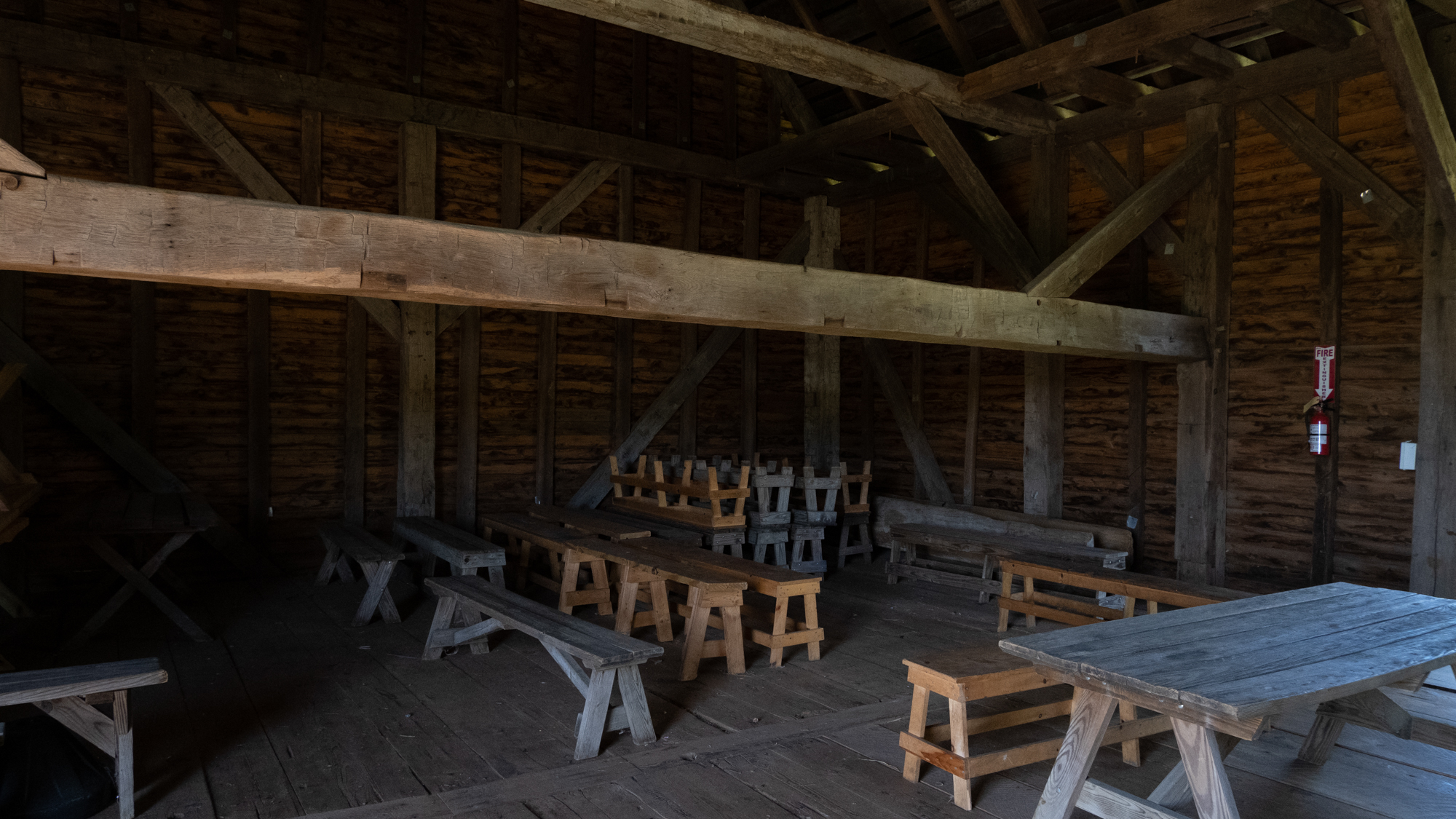

Fujifilm X-T30: Video
Videographers will appreciate the X-T30’s movie capabilities and features. The camera can capture DCI 4K (4096 x 2160) at 30/24p; 4k (3840 x 2160) at 30p/24p; Full HD (2048 x 1080) at 60p/24p; and Full HD (1920 x 1080) high-speed recording at 120p. Some of the benefits of this camera’s video features include DCI 4K with an internal bit rate of 200 Mbps, 10-bit out with 4:2:2 color space via HDMI and an F-Log profile for broader dynamic range and more color grading flexibility.
However, internal recording time is limited: 10 minutes at 4K; 15 minutes at full HD; up to about 6 minutes for high-speed recording. If you’re not shooting events that require extended single takes, then the time limitations may not be an issue.
Autofocus in video turned out to be a little hit or miss but generally the AF faithfully followed the subject across the screen. And, the 15-45mm lens is a power zoom, which is so quiet there’s virtually no noise when zooming.
Video quality is quite good. Like still images, colors are rendered accurately and naturally when shot in the Standard (Provia) film simulation. Footage is generally sharp and nicely detailed.
INSERT: Fuji XT30 4K video
Fujifilm X-T30: Features
In addition to extensive customization options, the X-T30 offers a wide range of features. If you’re not up for lots of manual controls, be assured there are plenty of automatic features as well.
The X-T30 can be set to bracket for exposure, ISO, white balance, dynamic range and film simulation. Macro photographers will appreciate focus bracketing so you can stack the images in post processing for extended depth of field.
Film simulation is one of Fujifilm’s signature features and, as its name implies, offers film-like looks to images. These include well-known films from Fuji such as Provia, Velvia, Astia, Acros (B&W), among others. Monochrome and Sepia are also available. Below are samples of Provia (Standard), Classic Chrome, Acros and Sepia film simulations.

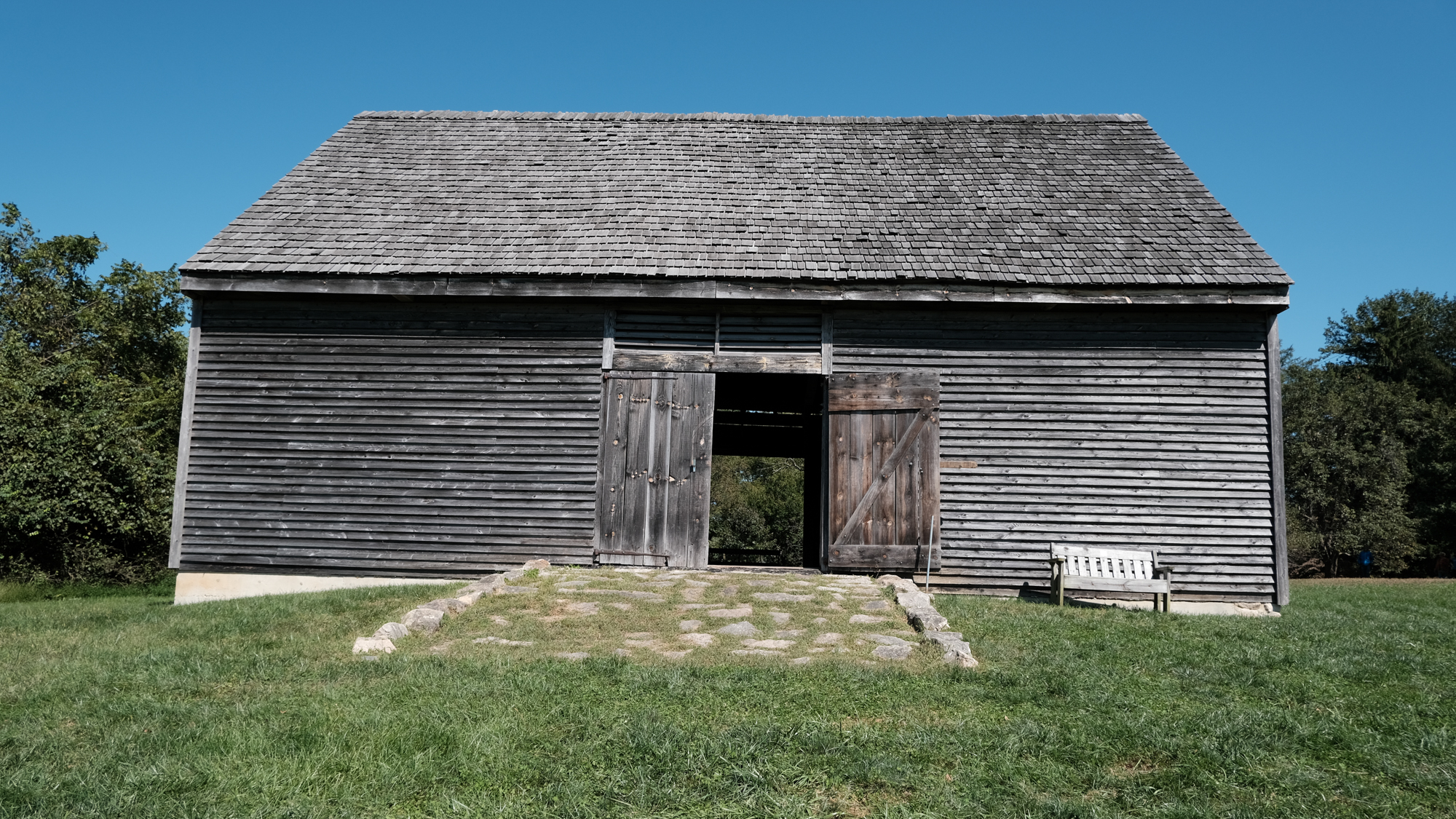
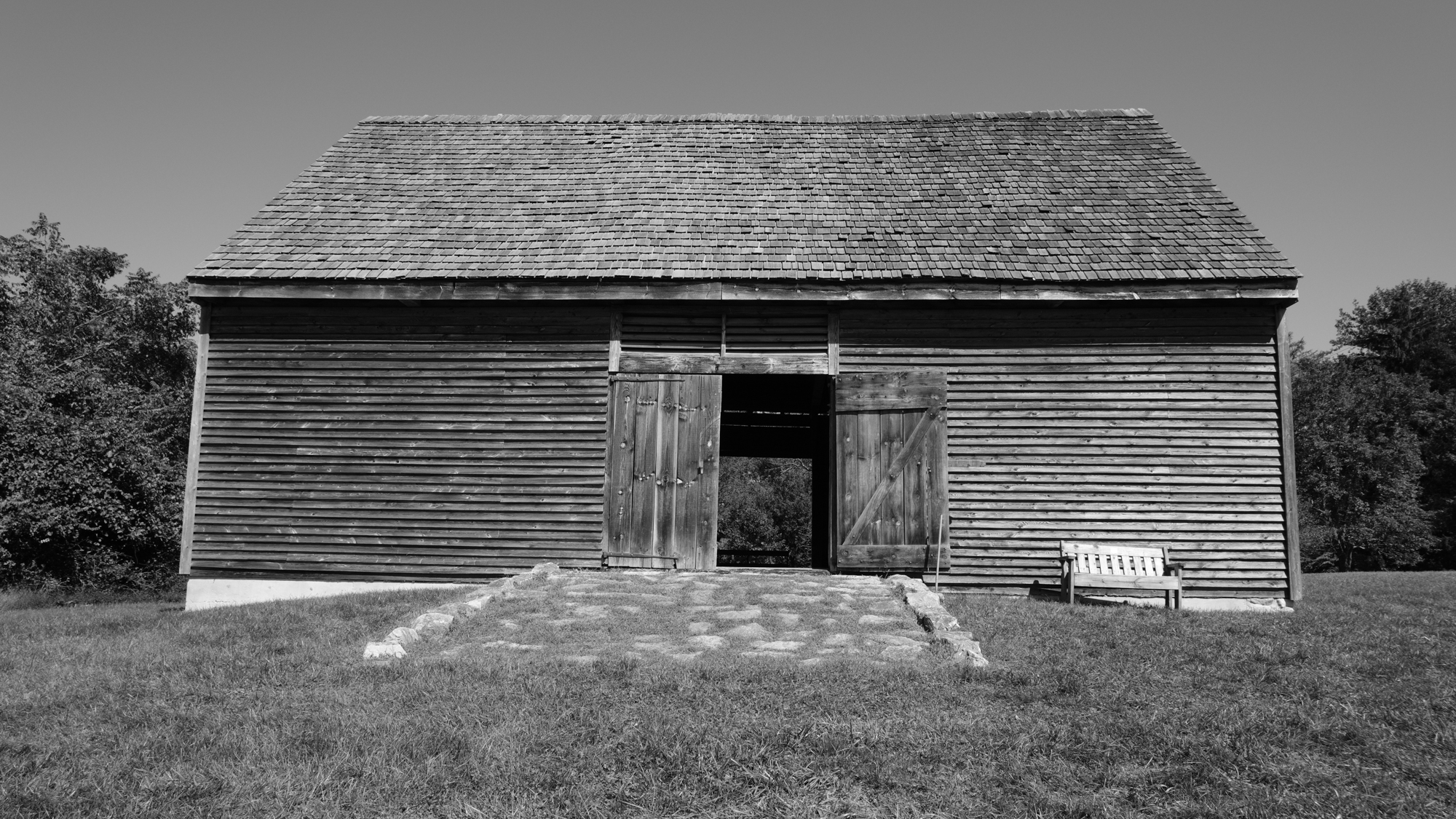
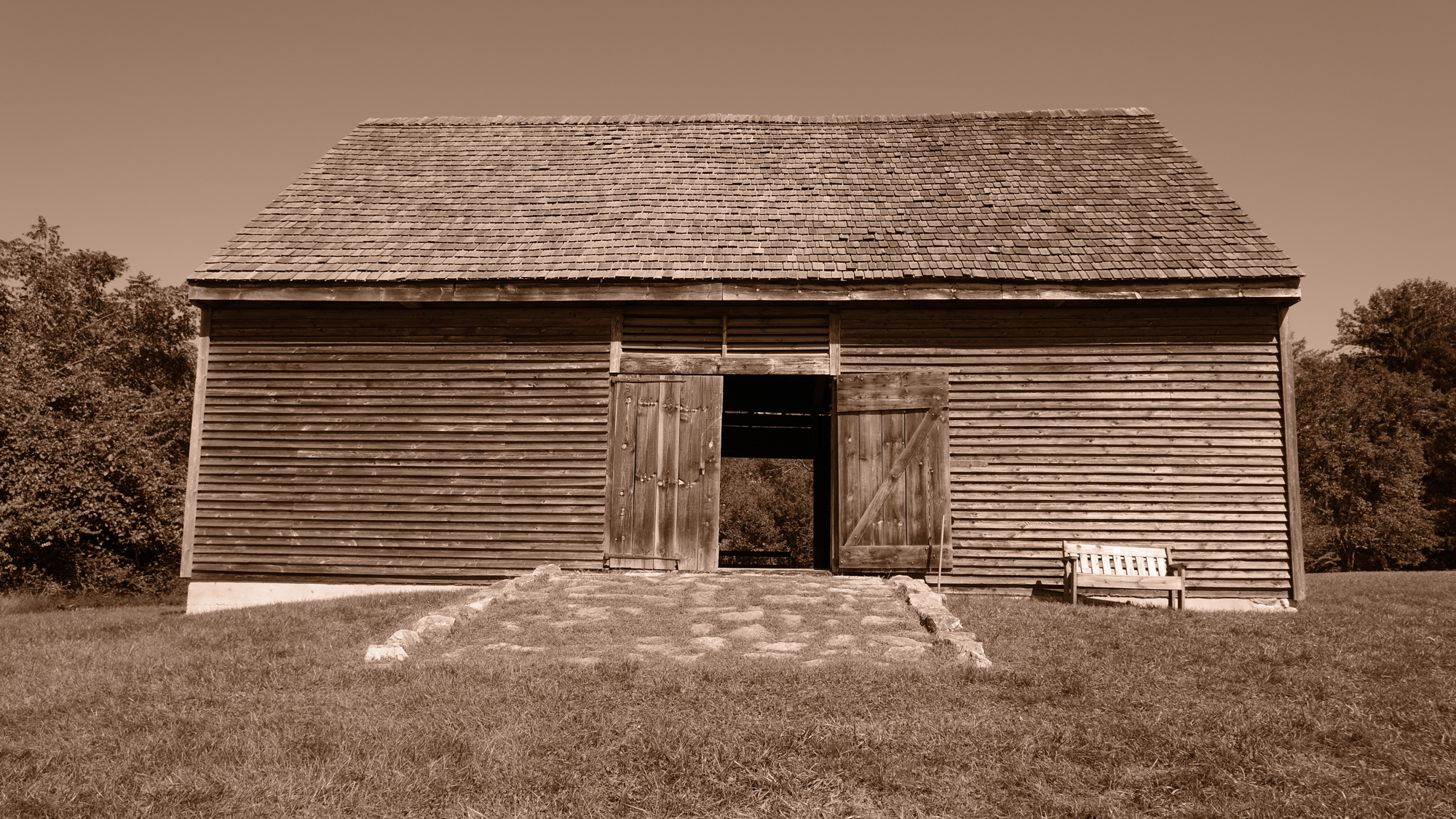
Creative filters such as Toy Camera, Miniature, Partial Color, along with a standard list of scene modes including Portrait and Landscape are also available.
For Partial Color, just choose the color of your choice (in the example below, red) and the camera will capture all but the color in monochrome.
Chances are if you need or want a specific feature or manual adjustment, the X-T30 has it. You may have to dig around to find it, though.
Fujifilm X-T30: Performance
Peppy is the best word to describe the X-T30’s performance. This little camera can zip along at up to 30 frames per second. Exciting, right? Keep in mind, however, that 30fps is possible only using the electronic shutter and with a 1.25x crop when shooting at 10/20/30fps. Additionally, there is potential for banding or rolling shutter (a wobbly effect) to affect your images. That said, the extreme continuous shooting speed is there if/when you need it.
Using the manual shutter, the camera can achieve speeds of up to 8fps—still quite good—for up to 90 frames of lossless compression RAW; 18 frames of uncompressed RAW.
Autofocus is quick and Fuji’s hybrid contrast and phase detection system offers 425 AF points across the entire frame. Tapping a focus point on the LCD locks in focus almost instantly. Using the joystick and half-pressing the shutter also locks in AF points very quickly.
Face and eye detection generally work well but if you plan on shooting moving subjects, it’s best to customize the AF settings via the AF-C custom settings menu. Fuji has created five scenarios with adjustable parameters. A sixth custom option allows you to set your own preferences for tracking sensitivity, speed tracking sensitivity and zone area switching.
Fujifilm X-T30: Wi-Fi and Bluetooth
Fuji’s free Camera Remote app, available for iOS and Android, allows you to transfer images from the camera to a mobile device automatically or manually. Remote shooting is possible with touch focus and a virtual shutter button. The app provides access to the most important settings including aperture, shutter speed, ISO, white balance, exposure compensation (depending on what exposure mode is set) so you can easily adjust those parameters to suit the shooting conditions.
Setup via Wi-Fi or Bluetooth is relatively easy. Once set up and with automatic image transfer on, images were quickly copied from the X-T30 to my iPhone 11.
Fujifilm X-T30 review: Verdict
The Fujifilm X-T30 is a solid choice for serious enthusiasts and semi-pro photographers who want a compact body filled with features, performance and excellent image quality. While you won’t get the weather-sealed body, larger buffer or dual card slots of the Fuji X-T3, you’ll save $500-600 and get almost all of the same features. As a bonus, Capture One—an excellent image editing application—offers a free version of the software for Fuji owners, Capture One Express for Fujifilm.
Perhaps the closest competitor is the Sony a6400 ($900 body only). With its fully articulating LCD, 11fps (vs. 8fps on the X-T30 with mechanical shutter) and no time limit on video recording, the Sony a6400 is the better option if you plan to do a lot of filming, and if you want a more standard control layout. But I’m really impressed with the Fujifilm’s X-T30’s feature set and image quality. I also really like its analog-look and feel. So it’s a tough choice and one for which both cameras should be taken seriously.
Theano Nikitas is a freelance journalist and photographer. She's been writing about photography for more than 20 years, contributing countless reviews of cameras, lenses, accessories and software packages to Tom's Guide. Her work has also appeared in dozens of other magazines and websites, including CNET, DPreview, PopPhoto, Professional Photographer and Shutterbug.
